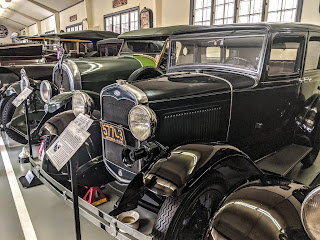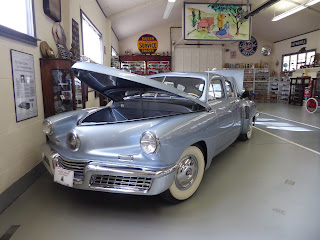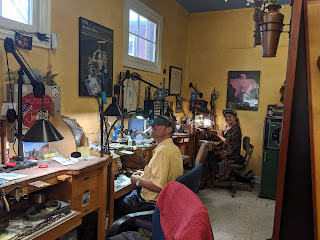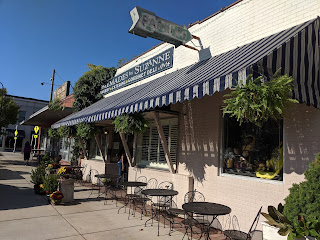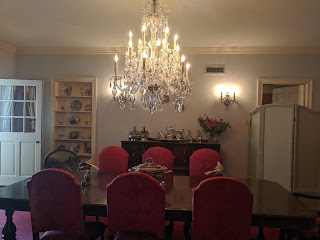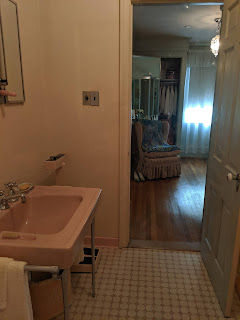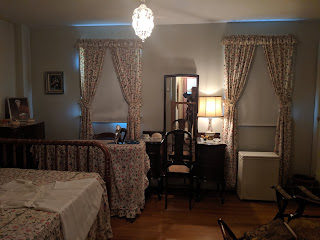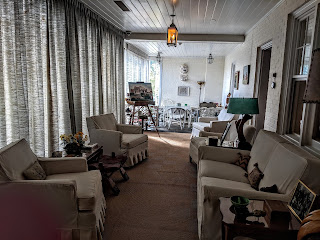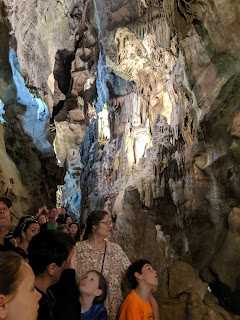Rather than go from 100 to zero, you may want to plan a post-holiday trip to a place where the pace of life is slow, allowing you plenty of time to tour local museums, visit a few restaurants and curl up with a book near a fireplace at the end of the day.
What I dislike most about Pennsylvania winters is the stress of traveling on treacherous roads, so when I learned that I could take the train from Harrisburg to Huntingdon, I was even more excited to check out the area. I left on a Monday and was delighted to discover that I had two seats to myself. It turned out that the train was only half full. Later on it snowed during my trip! I can't imagine how stressful that would have been if I had been driving. I learned later there were accidents along the way. Not only was I safe, warm and cozy, but I was also able to grab a bite for lunch aboard the dining car.
My experience in Huntingdon had been limited to camping at Raystown Lake many moons ago with friends, so I was glad to have the opportunity to see more of the town during this visit.
 |
| A scene taken on the train ride from Harrisburg to Huntingdon before the snow started. |
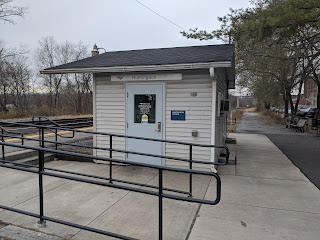 |
| The cozy Huntingdon Railroad Station is like stepping back in time. |
First Stop: The Station General Store
 |
| The Station General Store carries antiques, gifts, furniture and collectibles. |
A Visit to the Oldest Automobile Museum in Pennsylvania
The Swigart Museum, located at 12031 William Penn Highway, celebrates its centennial anniversary in 2020. The non-profit is dedicated to preserving the history of the automobile in America.
The story began simply enough when Huntingdon native W. Emmert Swigart began collecting antique cars. Emmert also founded an insurance company called Swigart Associates, which was located across from the post office in the center of town and on that property was a carriage house, which he transformed into a museum. "He had a collection of books, memorabilia, all kinds of things, including four, or five cars," said Marge Cutright, Executive Director. When the insurance company needed the carriage house as the business grew, Emmert purchased the current property where the collection is now housed. When W. Emmert died in 1949, William E. Swigart, Jr. inherited the collection and continued to expand it. William Swigart, Jr. passed in July of 2000, but his museum lives on with Cutright at the helm. "He made it a 501(c) 3 before he passed, so now we rely on public support to keep the doors open," she explains.
The License Plate Collection
The 9,100 square foot museum contains a collection of license plates that William accrued through years of collecting. According to Cutright, he would send his employees to an annual meet in Hershey to buy, sell and trade license plates. The junior Swigart, once again, has his father to thank for starting the collection. According to Cutright, there are hundreds of people who are license plate enthusiasts, many of whom belong to a professional organization called the Automobile License Plate Collector's Association. "During WWII, they were collecting metal for the war effort, but the government would allow collectors to keep the metal plates if they were part of a museum, so some of them would give them to W. Emmert in order to save their collection," said Cutright, offering a bit of license plate trivia: "They didn't start to make license plates until the 1900s, and some of them were made of soybeans, but the animals ate them, so they went to leather, or porcelain and eventually used metal," said Cutright. One of the most notable license plates in the Swigart collection is a license plate from FDR's limo when he was president. "We found a newspaper clipping with a picture of FDR and the license plate is visible in the picture," she said.
The Car Collection
 |
| Cars are arranged in chronological order. |
Cutright said that the "Tin Goose"prototype of the first Tucker made in 1947 is currently on display off property, so if Kolar visited today he'd only see the 1948 Tucker. "A total of 51 were made. We have number 13," said Cutright.
 |
| A 1948 Tucker is one of two in the collection that is currently on display. |
 |
| A 1919 Pierce-Arrow. |
Visitors are often surprised that electric cars existed "back in the day." Currently on display is a 1912 Detroit Electric. The company built 13,000 cars between 1907 and 1939. Notable folks who owned them were Lizzie Borden, Thomas Edison, Mamie Eisenhower and John D. Rockefeller, Jr.
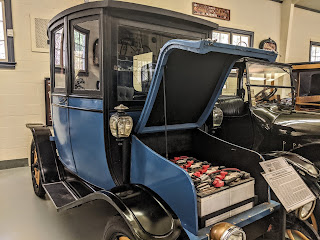 |
| A 1912 Detroit Electric car. |
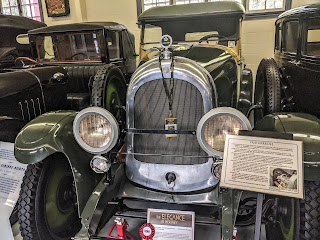 |
| A rare 1920 Carroll. Only 50 were made, and this is the only known survivor. |
 |
| A 1916 Scripps-Booth that belonged to the great, great granddaughter of Thomas Jefferson. |
 |
| The 1936 Duesenberg that frustrated Jay Leno. |
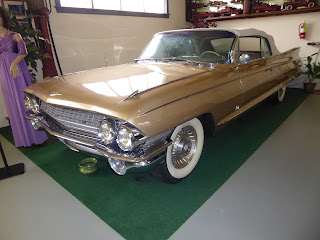 |
| A 1961 Cadillac Eldorado Biarritz Convertible |
The William E. Swigart Automobile Museum is open daily from Memorial Day weekend through the end of October and for groups throughout the year upon request.
Walk Down Memory Lane at the Isett Heritage Museum
 |
| The Isett Heritage Museum houses 40,000 items in three buildings. |
The tour begins in the renovated barn with antiques that date back to the 1800s. In the barn, you'll see an impressive collection of radios from tube radios, to vintage floor models, crystal set radios, Victrolas and more contemporary items like cassette, eight track and cd players. A dairy display includes a restaurant booth and ice cream fountain from Fouse's Dairy where Isett was employed as a teen and a printing exhibit contains two 1870 printing presses. A display located next to the printing press includes a variety of tin items created in local tin shops that date back to the 1800s.
 |
| An artifact from Fouse's dairy in Marklesburg where Isett worked as a teen. |
 |
| Some of the many antiques on display at the Isett Heritage Museum. |
 |
| Player piano rolls. |
 |
| A pedal car on display. |
Section three includes antique cars, pedal cars, soap box derby cars and a large exhibit dedicated to items used for communication, like vintage typewriters, telephones, dictaphones and hand-written journals dating back to the 1800s. In this section, Isett displays cable equipment from the Huntingdon TV Cable Company, which he founded in 1960.
Items in the third building include a collection of cameras from 1800's to the present day, courtesy of curator Vince Brown, who worked at Kodak in New York for many years.
 |
| Chinese View Camera circa 1970. |
Also on display are military items, uniforms, letters, weapons and maps ranging from the Civil War to the present.
 |
| Items belonging to Brice Blair, Captain, Company 1 of the 149th Regiment of Pennsylvania Volunteers, 1882-1884. |
If you find what you've read here intriguing, you can take a tour yourself. Winter hours are Monday through Friday, 8-5, with weekend tours by appointment.
(Many thanks to the Isett Heritage Museum for the photos they provided for this blog.)
Hunkering Down in Unique Accommodations
There's no better time to hunker down than in the winter and there are plenty of unique accommodations in the area. During my visit, I had the opportunity to view a few independently owned properties, perfect for a peaceful getaway.
Rustic Ridge Retreat
The Rustic Ridge Retreat is a new property built in 2018 high atop a hill, with beautiful vistas. Local residents Chris and Jackie Confer built the cabin as a retreat, hence the name. The house is perfect for one or two families to enjoy a quiet getaway, while at the same time being just minutes away from Huntingdon.
 |
| The living room of the Rustic Ridge Retreat. The kitchen at the Rustic Ridge Retreat. |
 |
| A bedroom in the Rustic Ridge Retreat. |
 |
| A sitting area at the top of the stairs. |
The Edgewater Inn
 |
| The Edgewater Inn dates back to 1762. |
 |
| The parlor of the Edgewater Inn is part of the original structure that dates to 1762. |
Many discover that the Edgewater Inn is an excellent place to recharge, away from ubiquitous computer screens. Wifi is available in public spaces only, so you can be forgiven if you inform everyone that once you retire to your room you're essentially unplugged until the next morning when you awaken refreshed and ready to tackle the day, but first be sure to enjoy the hearty breakfast served in the dining room that overlooks the Juniata river.
 |
| A room at the Edgewater Inn with a river view. |
Lane's Country Homestead and Pine Lodge are two fully furnished homes that are great getaways for family and friends. The Country Homestead is a quaint, 18th-century farmhouse with four bedrooms and sleeps approximately 10 people.
 |
| The dining room and quaint kitchen area at Lane's Country Homestead. |
 |
| The exterior of Lane's Pine Lodge. |
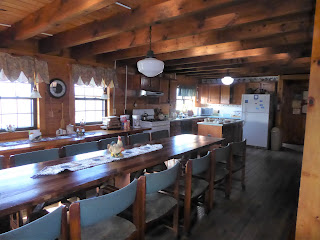 |
| The dining room at Lane's Pine Lodge. |
 |
| A bedroom at Lane's Pine Lodge. |
The Huntingdon Visitors' Bureau is featuring "Fireplace Getaways" this year by partnering with various lodges, some of which I've mentioned here. Those who visit as part of a group can take part in various activities, from painting, to cake decorating, morning yoga or coffee cupping. If your group would prefer a venturing experience, the Bureau has several from which to choose, whether it be a visit to the Isett Heritage Museum, the Swigart Automobile Museum, or a trip to the popular Lincoln Caverns.
If this sounds good to you, you're well on your way to making it happen. Just click on this link to begin planning your winter escape.

